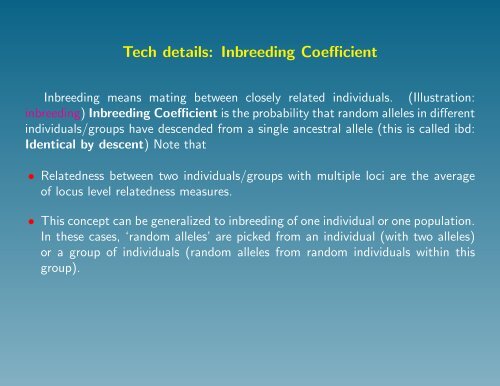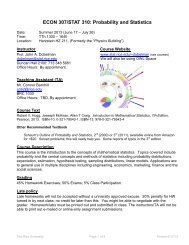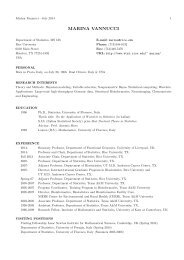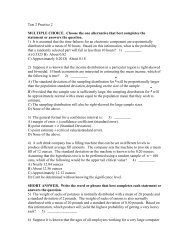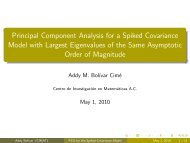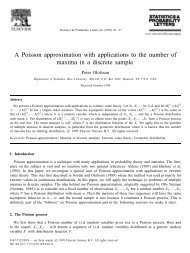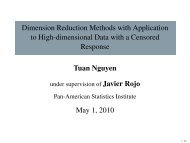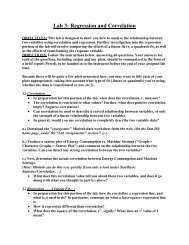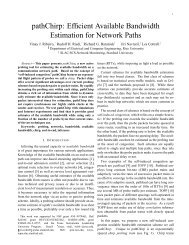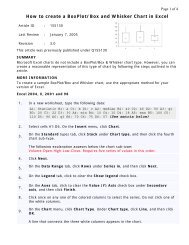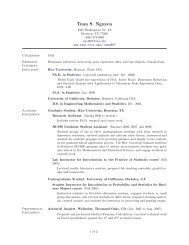slides in pdf format - Department of Statistics - Rice University
slides in pdf format - Department of Statistics - Rice University
slides in pdf format - Department of Statistics - Rice University
You also want an ePaper? Increase the reach of your titles
YUMPU automatically turns print PDFs into web optimized ePapers that Google loves.
Tech details: Inbreed<strong>in</strong>g Coefficient<br />
Inbreed<strong>in</strong>g means mat<strong>in</strong>g between closely related <strong>in</strong>dividuals. (Illustration:<br />
<strong>in</strong>breed<strong>in</strong>g) Inbreed<strong>in</strong>g Coefficient is the probability that random alleles <strong>in</strong> different<br />
<strong>in</strong>dividuals/groups have descended from a s<strong>in</strong>gle ancestral allele (this is called ibd:<br />
Identical by descent) Note that<br />
• Relatedness between two <strong>in</strong>dividuals/groups with multiple loci are the average<br />
<strong>of</strong> locus level relatedness measures.<br />
• This concept can be generalized to <strong>in</strong>breed<strong>in</strong>g <strong>of</strong> one <strong>in</strong>dividual or one population.<br />
In these cases, ‘random alleles’ are picked from an <strong>in</strong>dividual (with two alleles)<br />
or a group <strong>of</strong> <strong>in</strong>dividuals (random alleles from random <strong>in</strong>dividuals with<strong>in</strong> this<br />
group).


